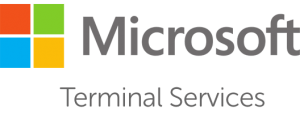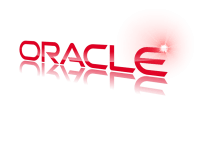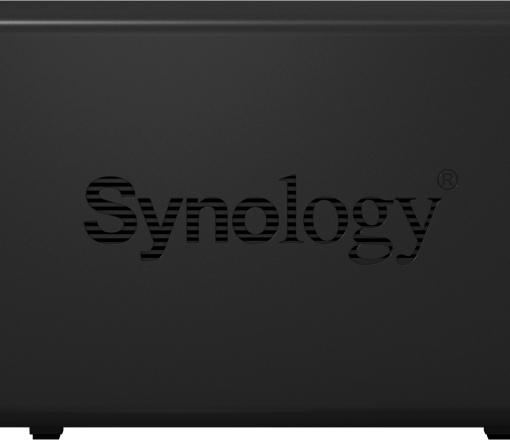Command line switches overview
The overview of commands below are taken from various local and on-line help files of all Outlook versions and from KB articles discussing them. In the right column you’ll find to which Outlook version the command applies.
| Switch | Description | Works in |
|---|---|---|
| /a path:\<filename> | Creates an item with the specified file as an attachment. Example:"C:\Program Files (x86)\Microsoft Office\Office14\Outlook.exe" /a "C:\My Documents\labels.doc"If no item type is specified, IPM.Note is assumed. Cannot be used with message classes that aren’t based on Outlook. |
2000, 2002/XP, 2003, 2007, 2010, 2013, 2016, 2019, 2021, 365 |
| /altvba <otmfilename> | Opens the VBA program specified in otmfilename, rather than %appdata%\Microsoft\Outlook\ VbaProject.OTM. |
2003, 2007, 2010, 2013, 2016, 2019, 2021, 365 |
| /autorun macroname | Opens Outlook and immediately runs the macro specified in macroname. (no longer supported after Outlook 2003 SP2) |
2003 |
| /c <messageclass> | Creates a new item of the specified message class (Outlook forms or any other valid MAPI form).Examples:
|
2002/XP, 2003, 2007, 2010, 2013, 2016, 2019, 2021, 365 |
| /checkclient | Prompts for the default manager of e-mail, news, and contacts. | 2000, 2002/XP, 2003, 2007, 2010, 2013, 2016, 2019, 2021, 365 |
| /cleanautocompletecache | Removes all names and e-mail addresses from the AutoComplete list. | 2010, 2013, 2016, 2019, 2021, 365 |
| /cleancategories | Deletes any custom category names that you have created. Restores categories to the default names. | 2007, 2010, 2013, 2016, 2019, 2021, 365 |
| /cleanclientrules | Starts Outlook and deletes client-based rules. | 2003, 2007, 2010, 2013, 2016, 2019, 2021, 365 |
| /cleanconvongoingactions | Deletes the Conversations Actions Table (CAT). CAT entries for a conversation thread usually expire 30 days after no activity. The command-line switch clears all conversation tagging, ignore, and moving rules immediately stopping any additional actions. | 2010, 2013, 2016, 2019, 2021, 365 |
| /cleandmrecords | Deletes the logging records saved when a manager or a delegate declines a meeting. | 2003, 2007, 2010, 2013, 2016, 2019, 2021, 365 |
| /cleanfinders | Removes Search Folders from the Microsoft Exchange server store. | 2000, 2002/XP, 2003, 2007, 2010, 2013, 2016, 2019, 2021, 365 |
| /cleanfreebusy | Clears and regenerates free/busy information. This switch can only be used when you are able to connect to your Microsoft Exchange server. | 2000, 2002/XP, 2003, 2007, 2010 |
| /cleanfromaddress | Removes all manually added From entries from the profile. | 2010, 2013, 2016, 2019, 2021, 365 |
| /cleanips | Restores receival of new messages in Exchange Cached mode (KB968773) | 2007, 2010, 2013, 2016, 2019, 2021, 365 |
| /cleanmailtipcache | Removes all MailTips from the cache. | 2010, 2013, 2016, 2019, 2021, 365 |
| /cleanprofile | Removes invalid profile keys and recreates default registry keys where applicable. | 2003, 2007 |
| /cleanpst | Launches Outlook with a clean Personal Folders file (.pst) | 2003 |
| /cleanreminders | Clears and regenerates reminders. | 2000, 2002/XP, 2003, 2007, 2010, 2013, 2016, 2019, 2021, 365 |
| /cleanroamedprefs | All previous roamed preferences are deleted and copied again from the local settings on the computer where this switch is used. This includes the roaming settings for reminders, free/busy grid, working hours, calendar publishing, and RSS rules. | 2007, 2010, 2013, 2016, 2019, 2021, 365 |
| /cleanrules | Starts Outlook and deletes client- and server-based rules. | 2003, 2007, 2010, 2013, 2016, 2019, 2021, 365 |
| /cleanschedplus | Deletes all Schedule+ data (free/busy, permissions, and .cal file) from the server and enables the free/busy information from the Outlook Calendar to be used and viewed by all Schedule+ 1.0 users. | 2000, 2002/XP, 2003 |
| /cleanserverrules | Starts Outlook and deletes server-based rules. | 2003, 2007, 2010, 2013, 2016, 2019, 2021, 365 |
| /cleansharing | Removes all RSS, Internet Calendar, and SharePoint subscriptions from Account Settings, but leaves all the previously downloaded content on your computer. This is useful if you cannot delete one of these subscriptions within Outlook 2010. | 2010, 2013, 2016, 2019, 2021, 365 |
| /cleansniff | Force Outlook to reset the Sniffer Lock value to the computer on which the switch is used. The Sniffer Lock determines which of your computers processes the meeting items when you run Outlook on multiple computers a the same time. The lockout process helps prevent duplicate reminder messages. | 2003, 2007, 2010, 2013, 2016, 2019, 2021, 365 |
| /cleansubscriptions | Deletes the subscription messages and properties for subscription features. | 2003, 2007, 2010, 2013, 2016, 2019, 2021, 365 |
| /cleanweather | Removes city locations added to the Weather Bar. | 2013, 2016, 2019, 2021, 365 |
| /cleanviews | Restores default views. All custom views you created are lost. | 2000, 2002/XP, 2003, 2007, 2010, 2013, 2016, 2019, 2021, 365 |
| /designer | Starts Outlook without figuring out if Outlook should be the default client in the first run. | 2003 |
| /embedding <msgfilename> | Opens the specified message file (.msg) as an OLE embedding. Also used without command-line parameters for standard OLE co-create. | 2002/XP, 2003, 2007, 2010, 2013, 2016, 2019, 2021, 365 |
| /explorer | Opens the new window in “explorer” mode (link bar on). | 2000, 2002/XP, 2003, 2007 |
| /f <msgfilename> | Opens the specified message file (.msg) or Microsoft Office saved search (.oss). (Support for oss-files has been dropped since Outlook 2003 SP2 due to security restrictions) |
2002/XP, 2003, 2007, 2010, 2013, 2016, 2019, 2021, 365 |
| /finder | Opens the Advanced Find dialog box. | 2007, 2010, 2013, 2016, 2019, 2021, 365 |
| /firstrun | Starts Outlook as if it were run for the first time. | 2003, 2007 |
| /folder | Opens a new window in “folder” mode (Navigation Pane off). | 2000, 2002/XP, 2003, 2007 |
| /hol <holfilename.hol> | Opens the specified .hol file. | 2003, 2007, 2010, 2013, 2016, 2019, 2021, 365 |
| /ical <icsfilename> | Opens the specified .ics file. | 2003, 2007, 2010, 2013, 2016, 2019, 2021, 365 |
| /importNK2 | Imports the contents of an .nk2 file which contains the nickname list used by both the automatic name checking and Auto-Complete features. | 2010, 2013, 2016, 2019, 2021, 365 |
| /importprf path:\<filename.prf> | Launches Outlook and opens/imports the defined MAPI profile (*.prf). If Outlook is already open, queues the profile to be imported on the next clean launch. | 2002/XP, 2003, 2007, 2010, 2013, 2016, 2019, 2021, 365 |
| /l <olkfilename> | Opens the specified .olk file. | 2003 |
| /launchtraininghelp assetid | Opens a Help window with the Help topic specified in assetid. | 2003, 2007, 2010, 2013, 2016, 2019, 2021, 365 |
| /m emailname | Provides a way for the user to add an e-mail name to the item. Only works in conjunction with the /c command-line parameter.Example: outlook.exe /c ipm.note /m emailname |
2003, 2007, 2010, 2013, 2016, 2019, 2021, 365 |
| /manageprofiles | Opens the Mail Setup dialog to manage your Mail Profile and account settings outside of Outlook. | 2016, 2019, 2021, 365 (Build 1806 and later) |
| /nocustomize | Starts Outlook without loading outcmd.dat (customized toolbars) and *.fav file. | 2003, 2007 |
| /noextensions | Starts Outlook with extensions turned off, but listed in the Add-In Manager. | 2003, 2007 |
| /nopollmail | Starts Outlook without checking mail at startup. | 2003 |
| /nopreview | Starts Outlook with the Reading Pane off and removes the option from the View menu. | 2000, 2002/XP, 2003, 2007, 2010, 2013, 2016, 2019, 2021, 365 |
| /p <msgfilename> | Prints the specified message (.msg). Prior to Outlook 2007, this does not work with HTML messages. |
2002/XP, 2003, 2007, 2010, 2013, 2016, 2019, 2021, 365 |
| /pim <profilename> | Creates a new Mail Profile with the specified name but without an email account. | 2016, 2019, 2021, 365 |
| /profile <profilename> | Loads the specified profile. If your profile name contains a space, enclose the profile name in quotation marks (“). | 2002/XP, 2003, 2007, 2010, 2013, 2016, 2019, 2021, 365 |
| /profiles | Opens the Choose Profile dialog box regardless of the Options setting on the Tools menu. | 2002/XP, 2003, 2007, 2010, 2013, 2016, 2019, 2021, 365 |
| /promptimportprf path:\<filename.prf> | Same as /importprf except a prompt appears and the user can cancel the import. | 2002/XP, 2003, 2007, 2010, 2013, 2016, 2019, 2021, 365 |
| /recycle | Starts Outlook using an existing Outlook window, if one exists. Used in combination with /explorer or /folder. | 2000, 2002/XP, 2003, 2007, 2010, 2013, 2016, 2019, 2021, 365 |
| /regserver | Rewrites all Outlook specific registry keys and re-associates file extensions without having to reinstall Outlook or run setup with the /y switch. The settings are stored in the Outlook.srg file located in the same folder as the Outlook program. | 2000, 2002/XP |
| /remigratecategories | Starts Outlook and and initiates the following commands on the default mailbox:
Note: This is the same command as in each Outlook mailbox properties dialog box. |
2007, 2010, 2013, 2016, 2019, 2021, 365 |
| /remigrateconversations | 2010, 2013, 2016, 2019, 2021, 365 | |
| /resetfoldernames | Resets default folder names (such as Inbox or Sent Items) to default names in the current Office user interface language.For example, if you first connect to your mailbox Outlook using a Russian user interface, the Russian default folder names cannot be renamed. To change the default folder names to another language such as Japanese or English, you can use this switch to reset the default folder names after changing the user interface language or installing a different language version of Outlook. | 2002/XP, 2003, 2007, 2010, 2013, 2016, 2019, 2021, 365 |
| /resetfolders | Restores missing folders for the default delivery location. | 2000, 2002/XP, 2003, 2007, 2010, 2013, 2016, 2019, 2021, 365 |
| /resetformregions | Empties the form regions cache and reloads the form region definitions from the Windows registry. | 2007, 2010, 2013, 2016, 2019, 2021, 365 |
| /resetoutlookbar | Rebuilds the Outlook Bar. | 2000, 2002/XP |
| /resetnavpane | Clears and regenerates the Navigation Pane for the current profile. | 2003, 2007, 2010, 2013, 2016, 2019, 2021, 365 |
| /resetquicksteps | Restores the default Quick Steps. All user-created Quick Steps are deleted. | 2010, 2013, 2016, 2019, 2021, 365 |
| /resetsearchcriteria | Resets all Instant Search criteria so that the default set of criteria is shown in each module. | 2007, 2010, 2013, 2016, 2019, 2021, 365 |
| /resetsharedfolders | Removes all shared folders from the Navigation Pane. | 2007, 2010, 2013, 2016, 2019, 2021, 365 |
| /resettodobar | Clears and regenerates the To-Do Bar task list for the current profile. The To-Do Bar search folder is deleted and re-created. | 2007, 2010, 2013, 2016, 2019, 2021, 365 |
| /restore | Attempts to open the same profile and folders that were open prior to an abnormal Outlook shutdown. | 2010, 2013, 2016, 2019, 2021, 365 |
| /rpcdiag | Opens Outlook and displays the remote procedure call (RPC) connection status dialog. | 2003, 2007, 2010, 2013, 2016, 2019, 2021, 365 |
| /rununittests | 2013, 2016, 2019, 2021, 365 | |
| /s <filename> | Loads the specified shortcuts file (.fav). | 2002/XP, 2003 |
| /safe | Starts Outlook without extensions, Reading Pane, or toolbar customization. | 2000, 2002/XP, 2003, 2007, 2010, 2013, 2016, 2019, 2021, 365 |
| /safe:1 | Starts Outlook with the Reading Pane off. | 2003, 2007, 2010, 2013, 2016, 2019, 365 |
| /safe:2 | Starts Outlook without checking mail at startup. | 2003 |
| /safe:3 | Starts Outlook with extensions turned off, but listed in the Add-In Manager. | 2003, 2007, 2010, 2013, 2016, 2019, 2021, 365 |
| /safe:4 | Starts Outlook without loading Outcmd.dat (customized toolbars) and *.fav file. | 2003, 2007 |
| /select foldername | Starts Outlook and opens the specified folder in a new window. For example, to open Outlook and display the default calendar use:"C:\Program Files (x86)\Microsoft Office\Office14\Outlook.exe" /select outlook:calendar |
2002/XP, 2003, 2007, 2010, 2013, 2016, 2019, 2021, 365 |
| /share feed://URL/filename /share stssync://URL /share web://URL/filename |
Specifies a sharing URL to connect to Outlook. For example, use stssync://URL to connect a Microsoft Windows SharePoint Services 3.0 list to Outlook. | 2007, 2010, 2013, 2016, 2019, 2021, 365 |
| /sniff | Starts Outlook and forces a detection of new meeting requests in the Inbox, and then adds them to the calendar. | 2003, 2007, 2010, 2013, 2016, 2019, 2021, 365 |
| /t <oftfilename> | Opens the specified .oft file. | 2003, 2007, 2010, 2013, 2016, 2019, 2021, 365 |
| /unregserver | Deletes all registry keys and file associations for Outlook. Its actions are based on the Outlook.srg file located in the same folder as the Outlook application. Use the /regserver switch to rewrite the registry keys and file associations after using this switch. | 2000, 2002/XP |
| /v <vcffilename> | Opens the specified .vcf file. | 2003, 2007, 2010, 2013, 2016, 2019, 2021, 365 |
| /vcal <vcsfilename> | Opens the specified .vcs file. | 2003, 2007, 2010, 2013, 2016, 2019, 2021, 365 |
| /x <xnkfilename> | Opens the specified .xnk file. | 2003, 2007 |




